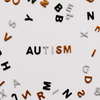From Sensory Avoidant to Sensory Tolerant: How TouchPoints Can Help

Children diagnosed with Autism Spectrum Disorders (ASD) are all too familiar with sensory integration difficulties. Sensitivity to lights, noises, touch, and changes in temperature is enough to cause avoidance, anxiety, and extreme meltdowns. In treatment, occupational therapists (OTs) and physical therapists (PTs) typically try to provide sensory information to organize the central nervous system to produce a more organized response to sensory stimuli. (See https://www.autism.com/symptoms_sensory_overview#sthash.FfJDBLI3.dpbs).
However, children with access to OT and PT services may only receive one hour per week of treatment and many techniques attempted outside of the therapy office fail to override the nervous system reactivity in a significant way. Some techniques require the child to actively choose to start a behavior or place burden on teachers to initiate, which risks the intervention being too late to prevent a meltdown. The result is that children with ASD have extreme difficulty functioning in typical classrooms or in situations where the sensory stimuli is not controlled. They are often flooded with anxiety in everyday situations that others’ find tolerable, resulting in an inability to focus, learn, or experience joy. Often times calming before sleep is a nightly difficulty that leaves parents feeling exhausted and hopeless.
The TouchPoints offer a passive, non-invasive solution that may be more powerful that other methods in preventing nervous system hyperarousal in real-time. TouchPoints can be used in the classroom, at home, or during therapy sessions to attempt to reduce sensory hyperarousal for improved outcomes in children with ASD.
For more information on sensory integration difficulties, go to http://www.siglobalnetwork.org/ or http://www.sensoryintegration.org.uk/
For more information on autism spectrum disorders, go to https://www.autismcenter.org/ or www.autismspeaks.org or www.nationalautismsociety.org, or http://www.autism.org.uk/
If you know someone who could benefit from the Touchpoints, please share! And please apply for our scholarship!





Is there an instuction manual? My son tried it but seemed just as agitated after 5 minutes. Should I adjust the setting? How do I shorten the wrist band?
Can it help with someone that gets very anxious when flying? Or individuals with OCD?
Just purchased my buzzies and can’t wait to get them! I will be at your launch party to pick them up with my kiddos and boyfriend! Can’t wait!
How can we get one of these? My son has PDDNOS which is a former of autism. He is mainstreamed in school. He takes no medicine cut I would lovery to try this. He can be hard to control and has melt downs. Any information you can give would be great meeting He is 10 years old.
Thanks
How long should be worn ?
And how does it exactly work?